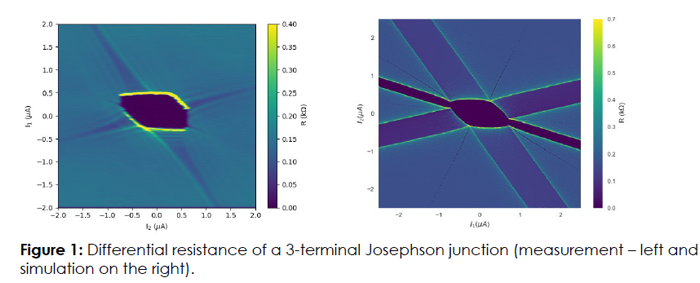Investigation of graphene-based multi-terminal Josephson junctions
M. Kedves1,2 T. Pápai1,2, G. Fülöp1,3, Sz. Csonka1,3, and P. Makk1,2
1 Department of Physics, Institute of Physics, Budapest University of Technology and Economics, Műegyetem rkp. 3., H-1111, Budapest, Hungary
2 MTA-BME Correlated van der Waals Structures Momentum Research Group,, Műegyetem rkp. 3., H-1111 Budapest, Hungary
3 MTA-BME Superconducting Nanoelectronics Momentum Research Group, Műegyetem rkp. 3., H-1111 Budapest, Hungary
The Andreev spectrum of an N-terminal Josephson junction is expected to host Weyl singularities in the (N-1)-dimensional space of the individual superconducting phases, thus mimicing the band structure of topological materials [1]. Graphene is an ideal platform to realize such multiterminal junctions, where high quality Josepshon junctions can be formed in a planar geometry.
First we will show the realization of high quality graphene based Josephson junctions and characterize their behavior using CPR measurements. Afterwards, we investigate a 3-terminal Josephson junction containing hBN-encapsulated graphene as the weak link connecting the terminals. We characterize the junction by DC transport measurements and apply RCSJ simulations to understand the multi-terminal behaviour. By applying current bias to 2 different leads, we obtain a differential resistance map with several complex features and observe the coexistence of normal and superconducting current paths in the graphene region [2,3,4]. Furthermore, we perform switching current distribution measurements to probe the switching mechanism in this multiterminal system.

[1] R-P. Riwar et al. Nat. Comm. 7, 11167 (2016)
[2] G. V. Graziano et al., Phys. Rev. B 101, 054510 (2020)
[3] A. W. Draelos et al., Nano Lett. (2019)
[4] N. Pankratova et al., Phys. Rev. X 10 (2020)